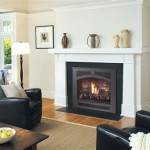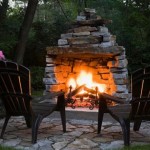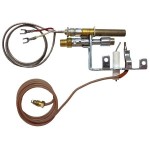Natural Gas Built-In Fireplaces: A Guide to Comfort and Convenience
Natural gas built-in fireplaces offer a blend of convenience, efficiency, and warmth, making them a popular choice for homeowners seeking to enhance their living spaces. These fireplaces are seamlessly integrated into the structure of a home, providing a focal point that enhances the aesthetic appeal and atmosphere. This comprehensive guide explores the key features, benefits, and considerations associated with natural gas built-in fireplaces, providing valuable insights for those interested in this efficient and elegant heating solution.
Key Features of Natural Gas Built-In Fireplaces
Natural gas built-in fireplaces stand out due to their unique design and functionality. These fireplaces typically feature a gas burner system that utilizes natural gas as the fuel source. The burner is located within the firebox, which is the main chamber where the fire is contained. The firebox is often lined with refractory materials, such as brick or ceramic, to withstand the high temperatures generated by the flames.
A key element is the gas valve, which controls the flow of natural gas to the burner. Most modern fireplaces come with a remote control or electronic ignition system for easy operation. Vent systems are another crucial component, facilitating safe and efficient combustion by channeling exhaust gases outdoors.
Beyond their functional aspects, built-in fireplaces offer aesthetic versatility. They can be customized with various finishes, materials, and designs to match any decor style. From traditional brick to sleek modern materials, the options are vast, allowing homeowners to create a fireplace that seamlessly blends with their existing interior.
Benefits of Natural Gas Built-In Fireplaces
The choice of a natural gas built-in fireplace comes with numerous advantages. These benefits are rooted in the efficiency, convenience, and aesthetic appeal of this heating solution.
1. Enhanced Comfort and Warmth
Natural gas built-in fireplaces provide a comfortable and inviting warmth that can transform any room. The radiant heat effectively warms the surrounding area, creating a cozy atmosphere ideal for gatherings or relaxation. The flames, flickering and dancing, offer a visual and emotional appeal that further enhances the ambiance.
2. Increased Convenience and Efficiency
Natural gas fireplaces are renowned for their convenience. Unlike traditional wood-burning fireplaces that require constant tending, these fireplaces are easily ignited with the flick of a switch or the press of a button. The gas flow can be adjusted to control the intensity of the flames, providing precise temperature regulation. Furthermore, their high efficiency ensures minimal energy waste, translating into cost savings on heating bills.
3. Enhanced Aesthetics and Decor
The aesthetic advantages of a natural gas built-in fireplace are undeniable. These fireplaces can be integrated into the design of any room, becoming a centerpiece that elevates the overall aesthetic appeal. The variety of finishes, materials, and designs allows for customization, catering to diverse tastes and decor styles. Whether it's a traditional brick fireplace or a sleek modern design, a built-in fireplace adds a touch of elegance and sophistication to any space.
Considerations for Choosing a Natural Gas Built-In Fireplace
Prior to selecting a natural gas built-in fireplace, it's essential to carefully consider several factors to ensure a seamless integration and optimal performance.
1. Size and Placement
The size of the fireplace should be chosen based on the dimensions of the room. A fireplace that is too small might not effectively heat the space, while one that is too large can overwhelm the room. Consider the placement of the fireplace, ensuring sufficient clearance from walls and surrounding furniture.
2. Ventilation and Safety
Proper ventilation is crucial for safe and efficient operation. The fireplace should be connected to a vent system that channels exhaust gases outdoors. Consult with a qualified professional to ensure the vent system meets local building codes and safety standards.
3. Fuel Source and Costs
Natural gas availability is a critical factor. Ensure that natural gas is readily accessible in your area. Research local gas prices and compare them to other heating options to determine cost-effectiveness. The cost of installation is another significant factor to consider, which may vary based on the complexity of the project and other factors.
4. Aesthetics and Design
Consider the desired aesthetic of the fireplace, choosing a design that complements the overall decor of the room. Explore the range of materials, finishes, and style options available to find the perfect fit for your space. Consider consulting with a professional designer or decorator for guidance on selecting a fireplace that harmonizes with your interior design preferences.

Mendota Fullview Built In Gas Fireplaces

Napoleon Riverside Clean Face 47 Outdoor Built In Natural Gas Fireplace W Millivolt Ignition And Brushed Stainless Steel Gss42cfn

Heat Glo True Built In Gas Fireplace

Existing Fireplace Or A Brand New Build Lopi Fireplaces

How To Operate A Gas Fireplace

How To For A Gas Fireplace Fireplaces Direct Learning Center
:max_bytes(150000):strip_icc()/ventless-gas-fireplaces-4160746-hero-f9d4bdcd9bd446eb84406de306f790ba.jpg?strip=all)
How To Pick Out A Ventless Gas Fireplace

Built In Fireplaces Portland Or Nw Natural Appliance Center

Elevation 36 Direct Vent Fireplace Natural Gas Electronic Ignition

Faber Matrix 3326 Built In Natural Gas Fireplace Front Facing Fmg3326f Junction
Related Posts








